Additional university websites with images and information about this disease:
- Anthracnose on cucumber and watermelon on Long Island (LIHREC)
- Cucumber Anthracnose in Florida (University of Florida)
- Anthracnose of Cucumber, Muskmelon, and Watermelon (Purdue University)
Introduction
Anthracnose is a destructive disease of cucurbits occurring during warm, moist seasons. Significant damage can occur to cucumber, cantaloupe, and watermelon. Squash and pumpkins are rarely infected by the pathogen. Differing occurrence on the various cucurbit crop types partly reflects pathogenic specialization. Several races and vegetative compatibility groups have been defined, which challenges breeding for resistance.
This disease is most common in the southern, mid-Atlantic, and mid-western states, but can occur in New York if temperatures are at or above normal and frequent rains occur during the summer to promote disease development and spread. In 1987 when this factsheet was originally prepared, anthracnose was occurring more often than it does today.
Causal Agent
Anthracnose is caused by the fungus Colletotrichum orbiculare (syn. C. lagenarium).
Symptoms and Signs
All aboveground plant parts can be infected. Symptoms vary among the three principal cucurbits infected. Leaf lesions (spots) begin as water soaked and then become yellowish circular spots. On watermelon foliage the spots are irregular and turn dark brown or black (figure 1). On cucumber (figure 2) and cantaloupe (figure 3) the spots turn brown and can enlarge considerably. Stem lesions on cantaloupe can girdle the stem and cause vines to wilt. Stem cankers are less obvious on cucumbers. Symptoms developing on seedlings when the pathogen is seed-borne are wilting cotyledons and stem lesions near the soil line.
The most striking diagnostic symptoms are produced on the fruit, where circular, black, sunken cankers appear. On watermelon the spots may measure 1/4 to 1/2 in. (6 to 13 mm) in diameter and up to 1/4 in. (6 mm) deep (figure 4). When moisture is present, the black center of the lesion is covered with a gelatinous mass of salmon-colored spores (figure 5). Cankers lined with this characteristic color can never be mistaken for any other disease. Similar lesions are produced on cantaloupe (figure 6) and cucumber (figure 7). Affected fruit can have a bitter taste. Secondary fungi and bacteria often invade anthracnose lesions and cause the fruit to quickly deteriorate.
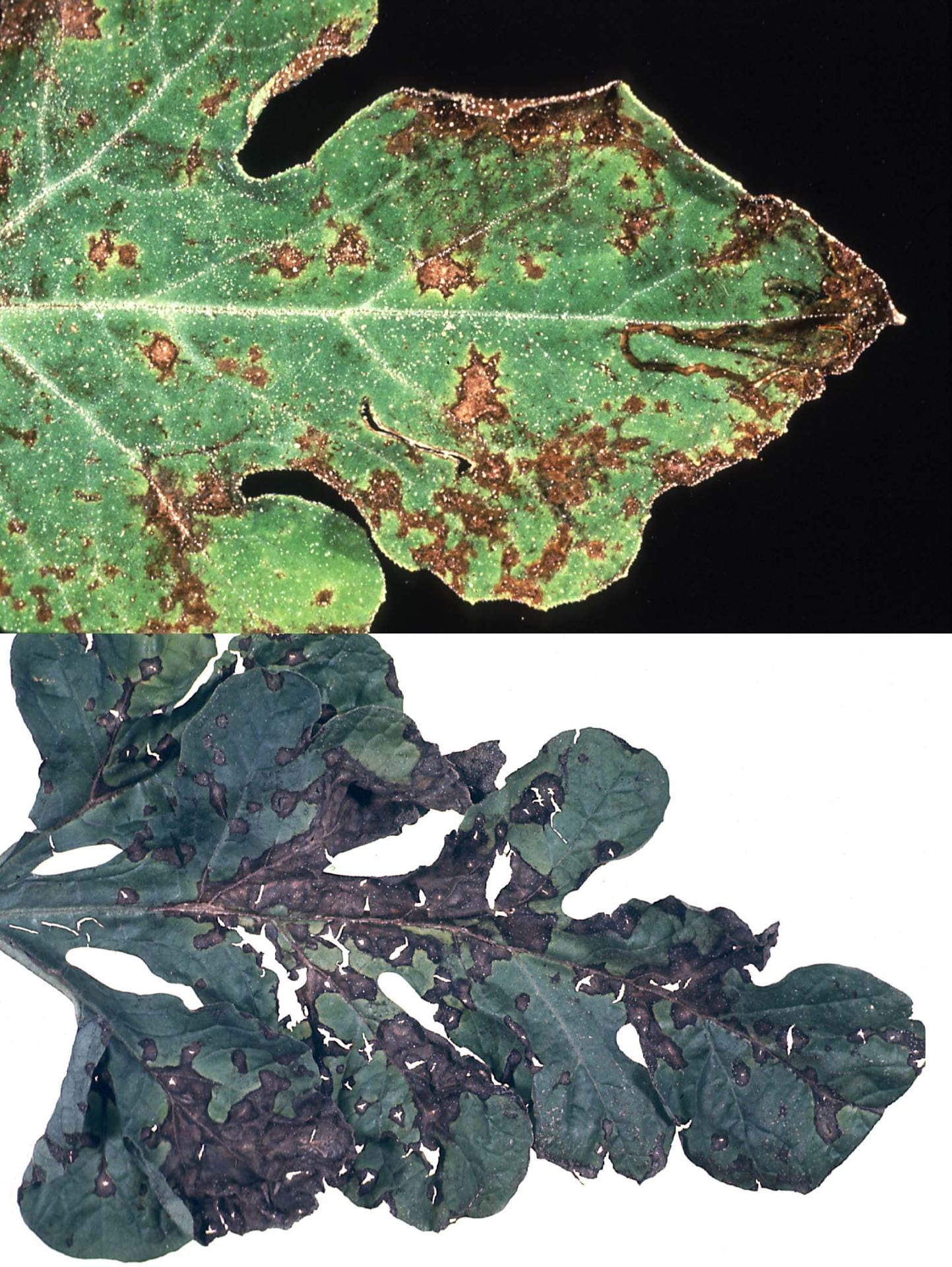

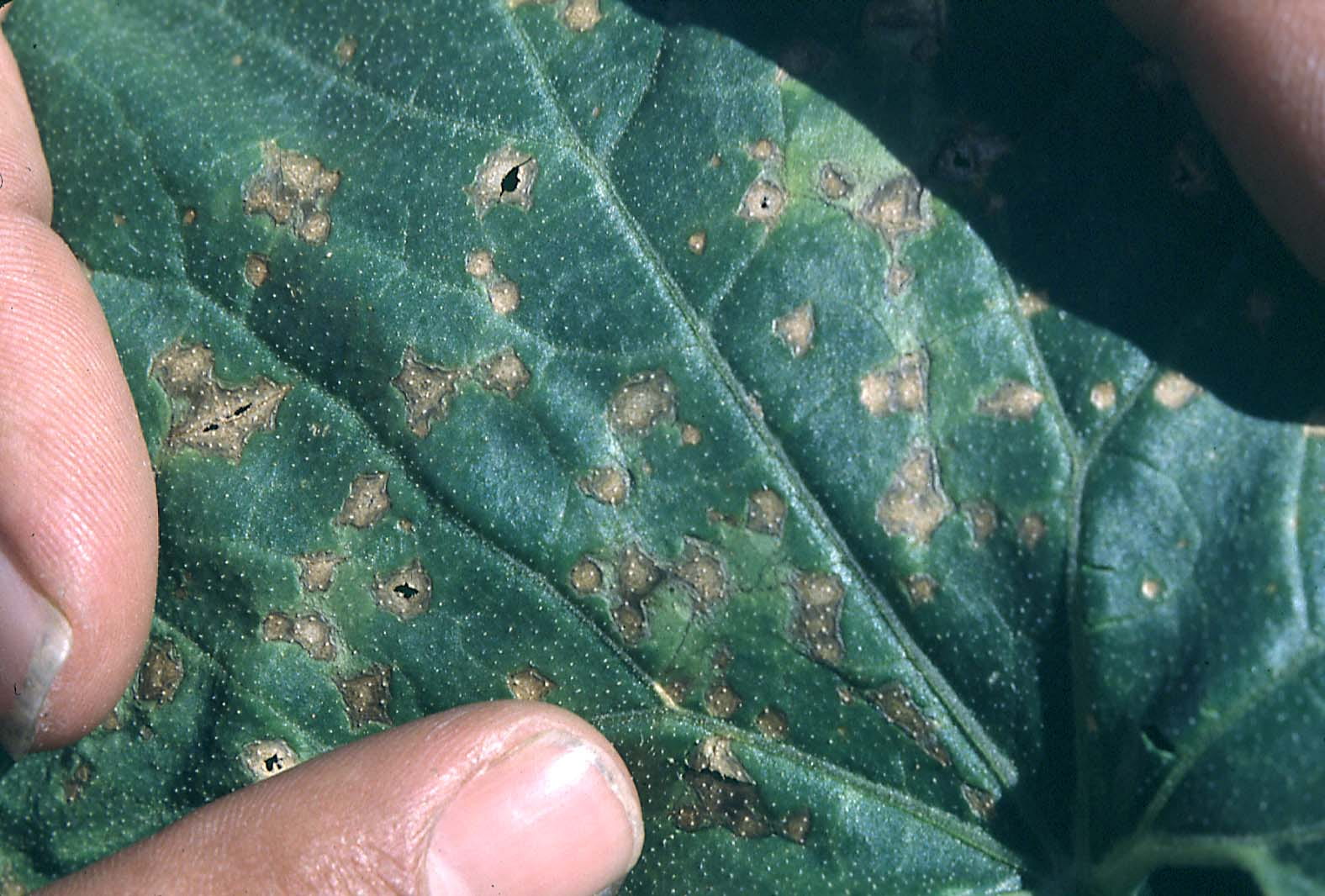
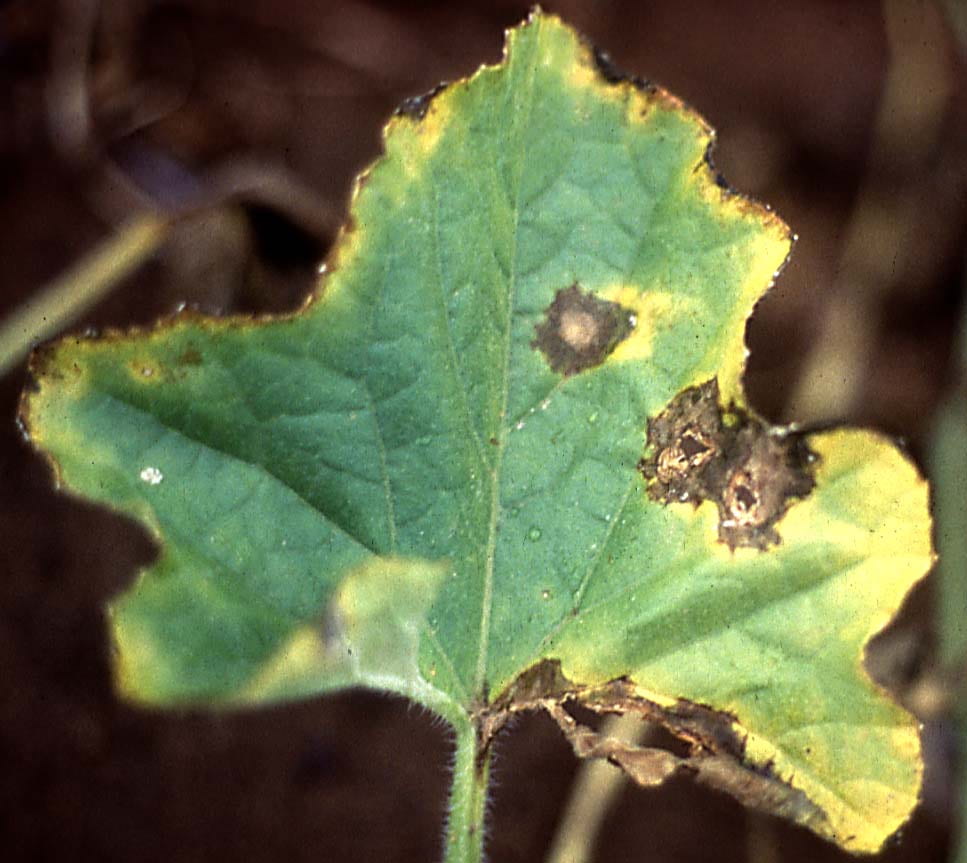
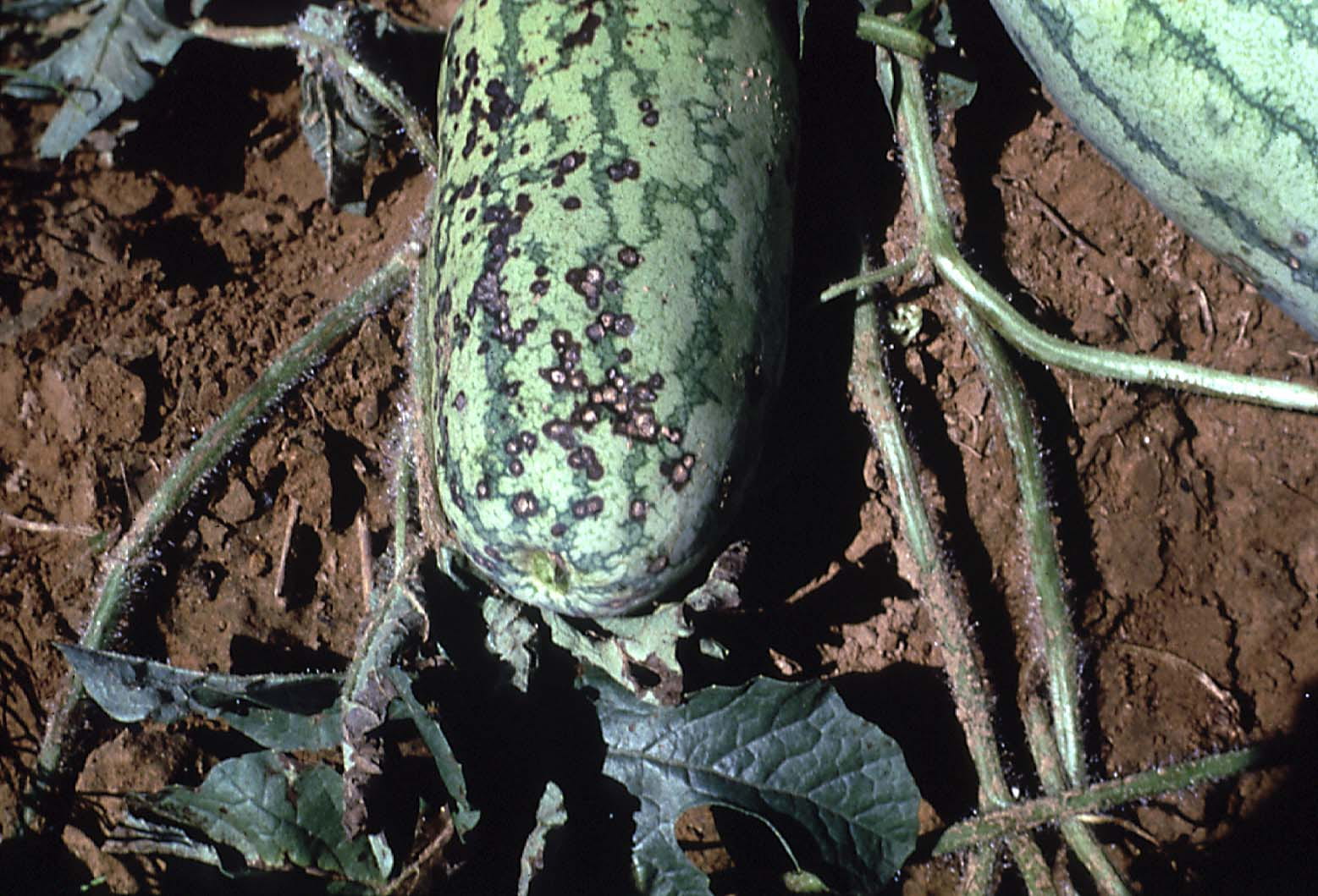
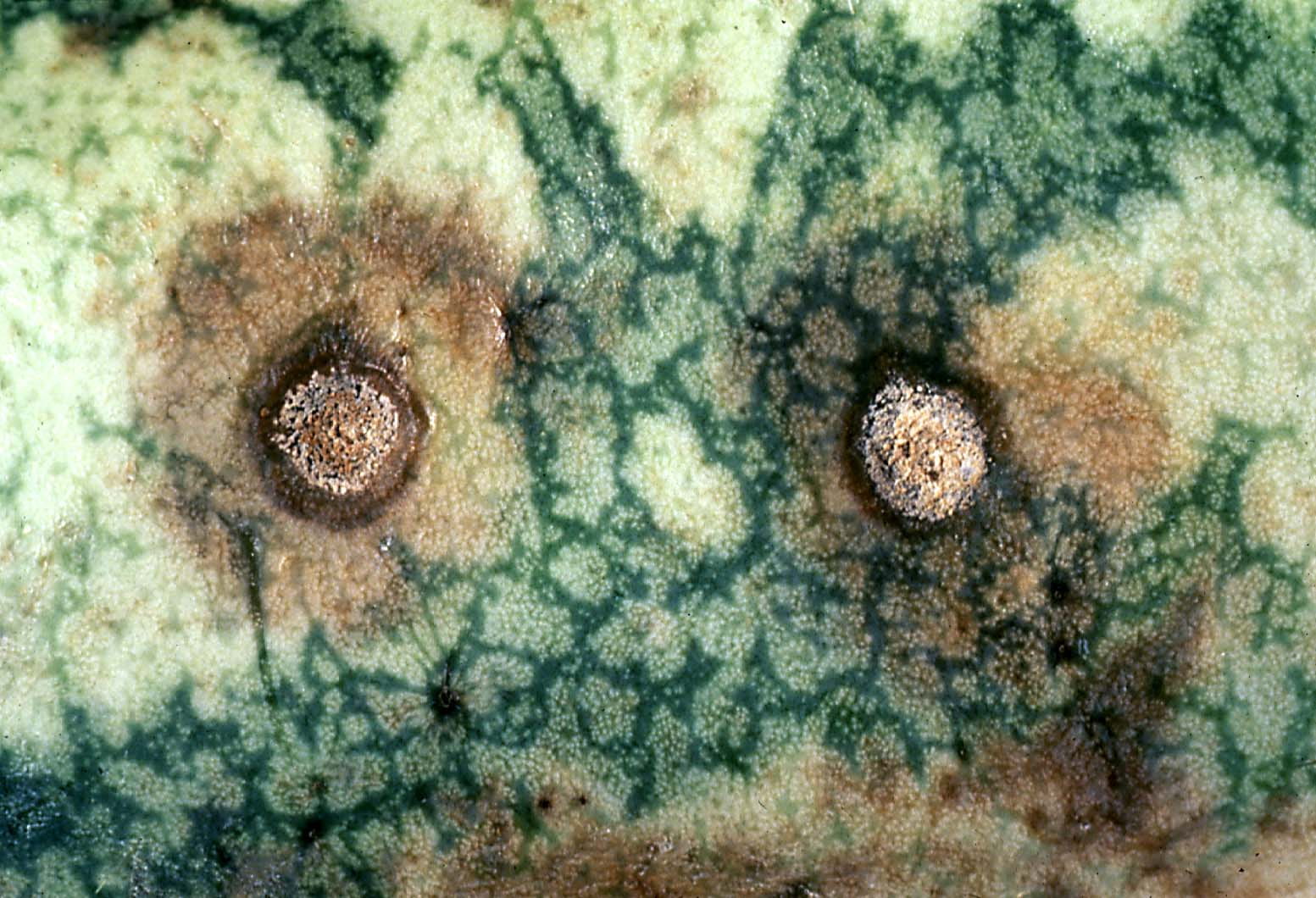
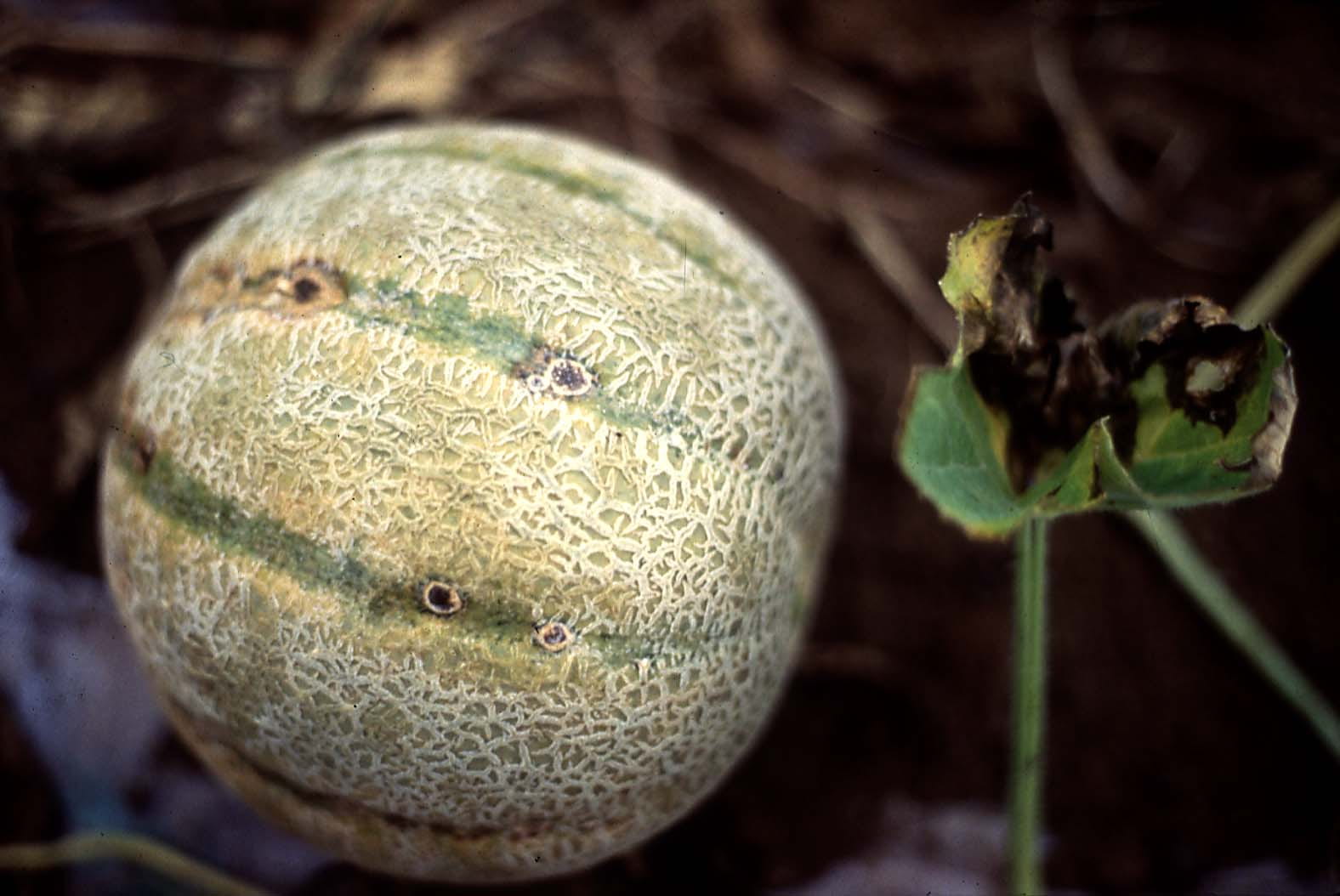
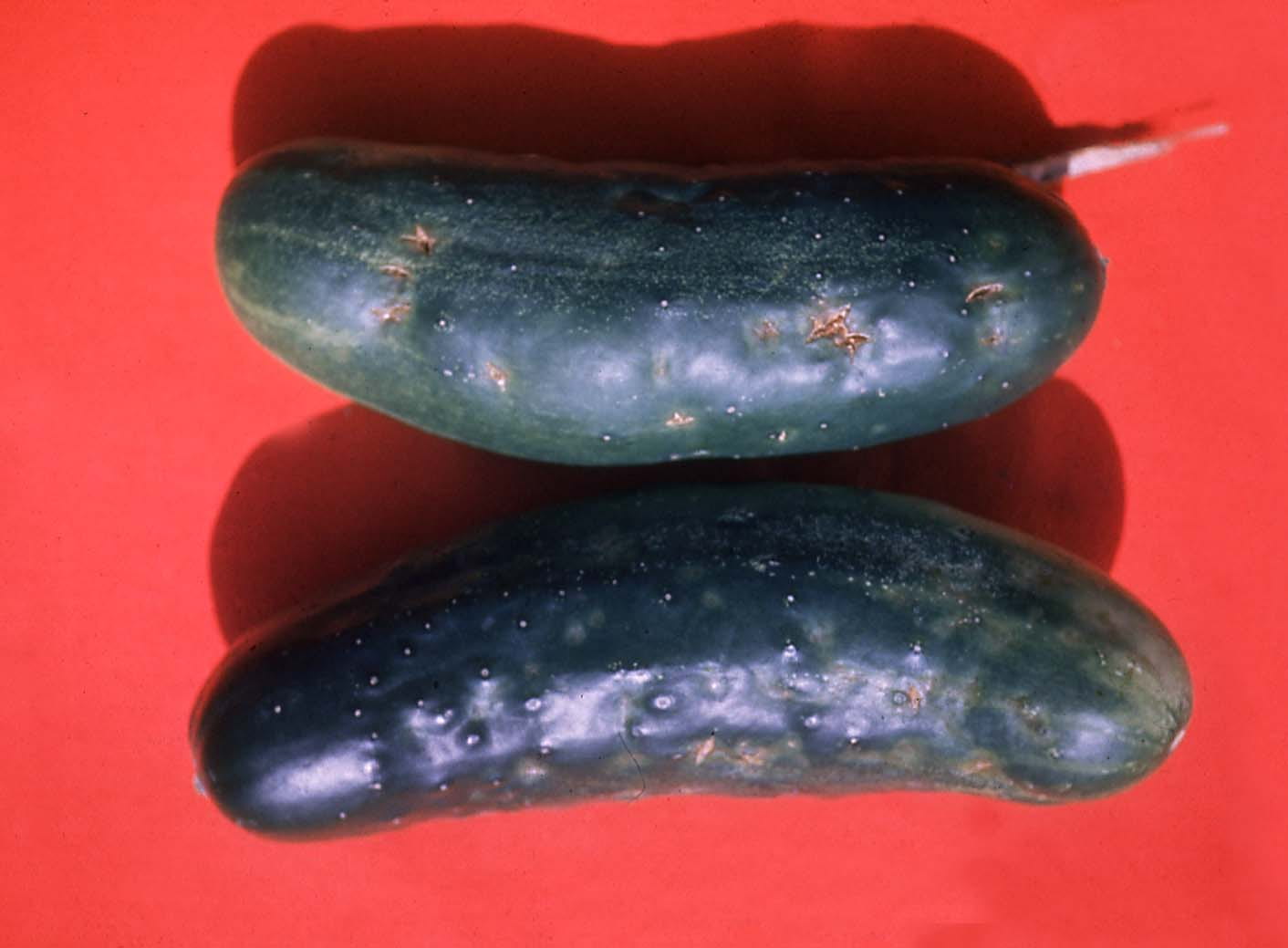
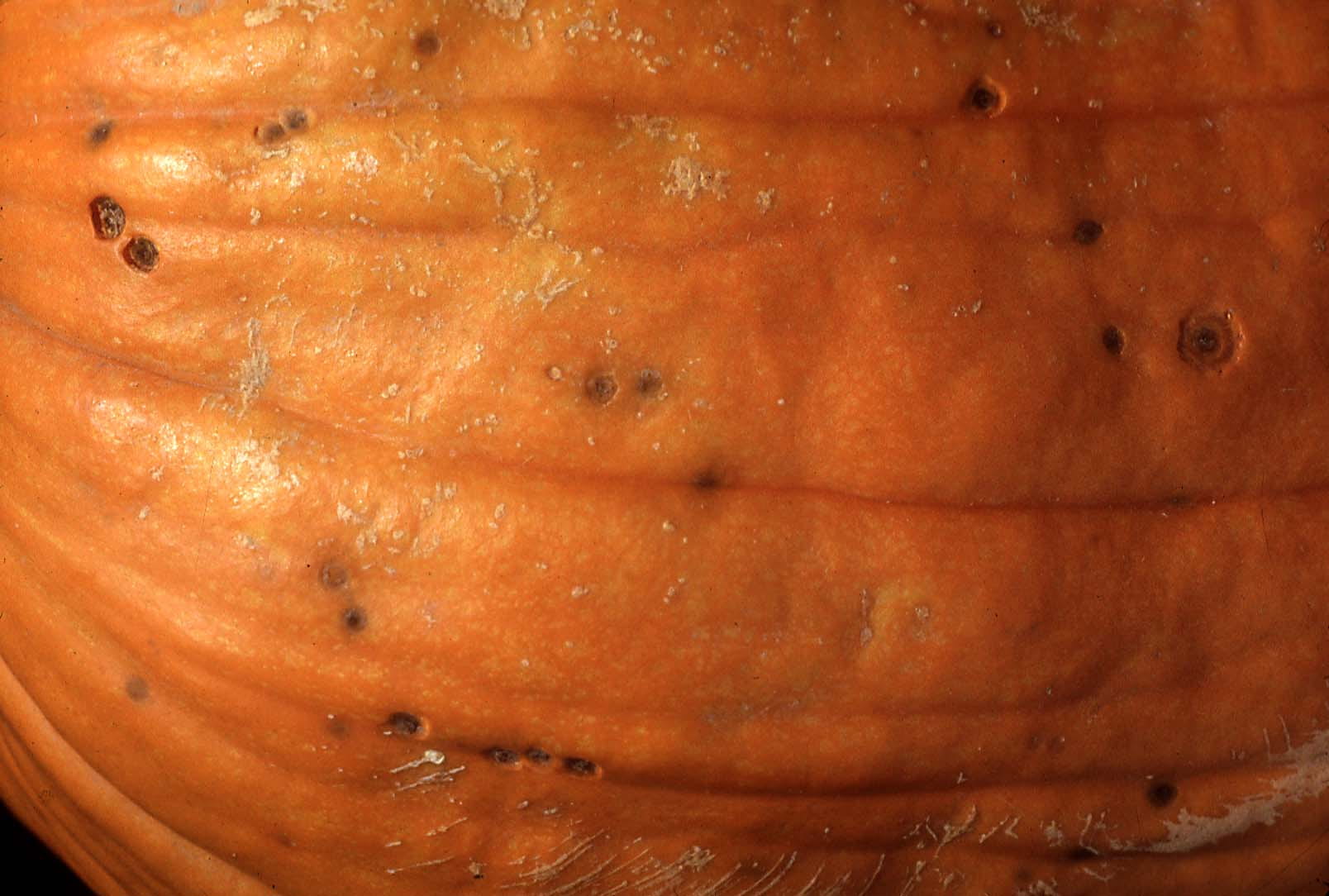
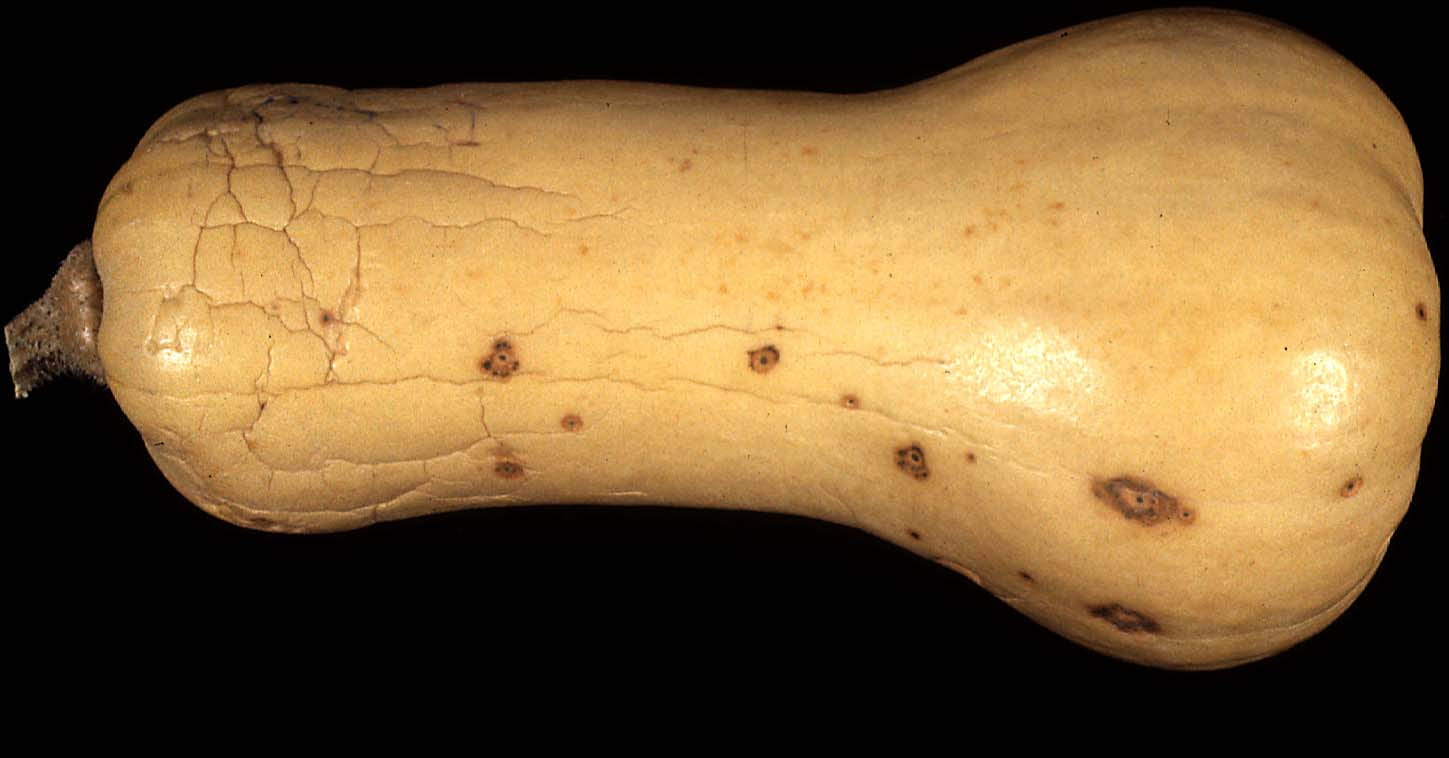
How the Pathogen Spreads
- Contaminated seed (pathogen can be in and on seed).
- Spores splashed by water from contaminated debris or infected volunteer cucurbit plants or cucurbit weeds that grew from contaminated seed.
- Spores less commonly are spread by wind.
- Workers touching spores on affected plant tissue with their hands or tools and then touching healthy plant tissue.
- Cucumber beetles can pick up spores when they walk through lesions.
Disease Cycle
The anthracnose fungus overwinters on diseased residue from the previous vine crop. The pathogen may also be carried on cucurbit seed. In the spring under wet conditions the fungus releases airborne spores (conidia) that infect vines and foliage. The fungus depends on wetness and fairly high temperatures, 75°F (24°C) being considered optimum. Conidia do not germinate below 40°F (4.4°C) or above 86°F (30°C) or if they are not supplied with a film of moisture. In addition, the pathogen must have water to free the conidia from their sticky covering in the fruiting body. The fruiting body is slightly saucer-shaped and lined with microscopic stalks. The microscopic stalks produce the conidia, which amass in sticky, flesh-colored tendrils. As long as the tendrils remain dry, the conidia cannot escape, but a heavy dew may dissolve the mucilaginous covering and then rain drops splash them several feet. Anthracnose usually becomes established in mid-season after the plant canopy has developed.
Management
- Use pathogen-free seed.
- Select resistant cucumber and watermelon varieties.
- Control cucurbit volunteer plants and weeds.
- Select fields where cucurbit crops have not been grown for at least three years.
- Avoid working in crops when leaves are wet.
- Apply fungicides. For up-to-date information about labeled conventional fungicides see current Cornell Integrated Crop and Pest Management Guidelines for Commercial Vegetable Production.
- To minimize additional loss when harvesting from a field with anthracnose, avoid wounding fruit and immerse them in clean, fresh wash water containing 120 parts per million of chlorine to prevent new infections.
- Promptly after harvest, remove plant debris or mow then deeply incorporate it.
More Information/prepared by:
Margaret Tuttle McGrath
Associate Professor
Long Island Horticultural Research and Extension Center (LIHREC)
Plant Pathology and Plant-Microbe Biology Section
School of Integrative Plant Science
College of Agriculture and Life Sciences
Cornell University
mtm3@cornell.edu
Edited and updated November 2022 by Margaret Tuttle McGrath. Originally prepared for Vegetable MD Online website by Thomas A. Zitter, Emeritus Professor, PPPMB, Cornell University. Photographs were taken by Tom except figure 8 which was taken by W. R. Sitterly.


